
For months, your baby had been sleeping well — you thought you were in the clear. Then all of a sudden, they’re at it again, awake and teary-eyed keeping you bleary-eyed. If your little one has done a bedtime 180, they’re likely experiencing an 8-month sleep regression.
In this article, we’ll tell you the signs of an 8 month sleep regression, what causes it, and how to cope so you can get everyone back to bed. With any luck, you’ll all be catching your zzzs in no time.
Table of Contents
- What is a sleep regression?
- Signs of an 8 month sleep regression
- 8 month sleep regression: causes
- 8 month sleep regression: how to cope
- When to call the doctor
What is a sleep regression?
A sleep regression is basically what it sounds like — your little one has been sleeping like a baby, but then suddenly, they’re back to square one, cranky and fussy, waking up, or refusing to be put to bed.
Sleep regressions normally happen when your baby is developing rapidly — physically, emotionally, and mentally — and will typically last about two to six weeks, though it can vary.
Babies will often experience these multiple times in their first two years, at four months, six months, and eight to ten months.
Signs of an 8 month sleep regression
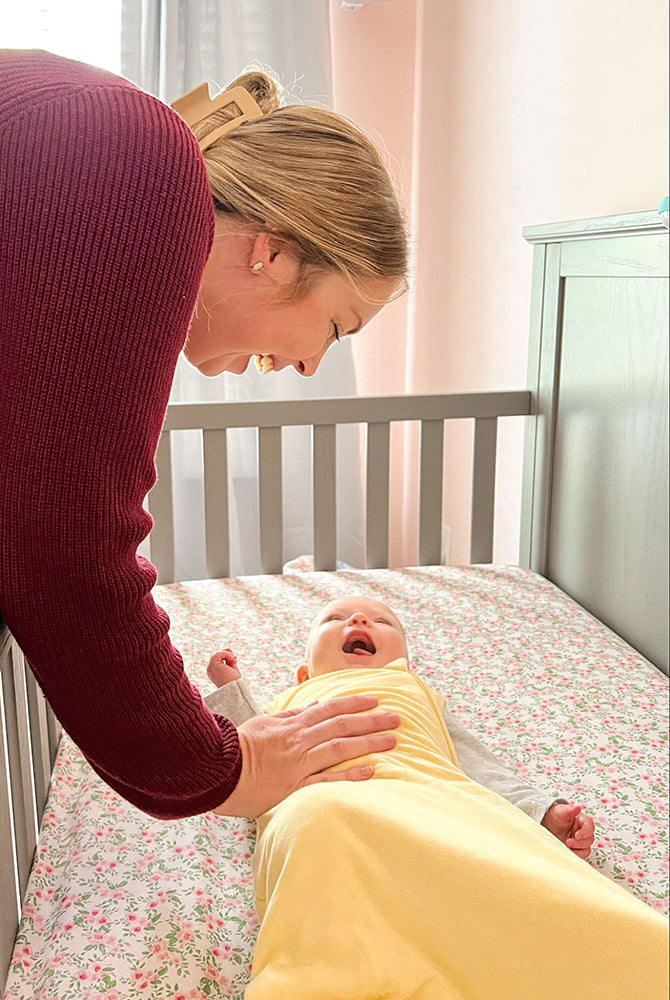
Wondering if your little one is experiencing an 8 month sleep regression? Here are some of the telltale signs:
- Waking up more often in the night
- Having a hard time falling asleep or fighting sleep
- Increased fussiness
- Inability to self-soothe
- Crying at bedtime
- Refusing naps during the day
8 month sleep regression: causes
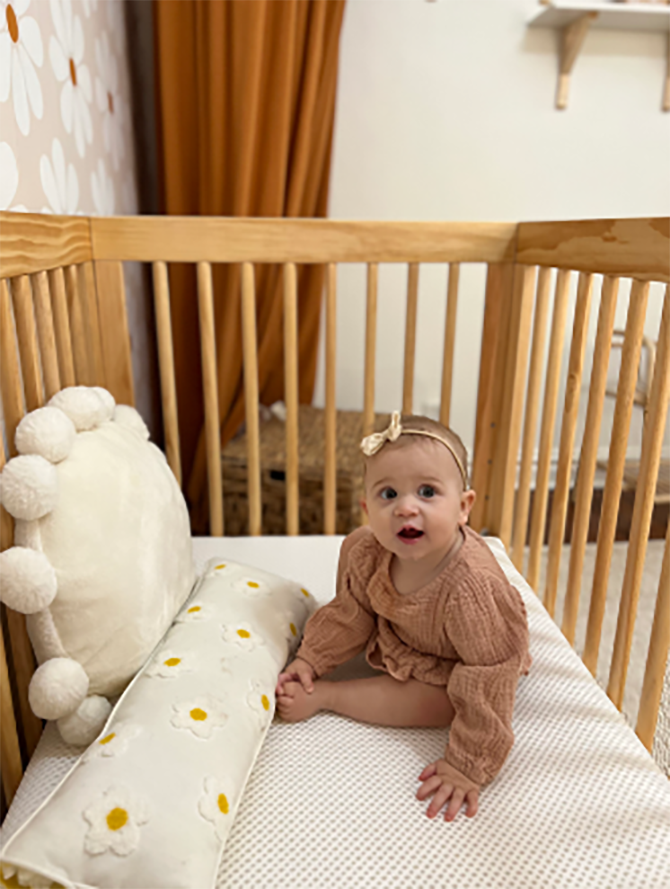
As we said, sleep regressions often happen when your child is growing and developing rapidly, and at eight months there’s lots going on that could be contributing to this new blip in their sleep pattern. Let’s take a look.
Teething pain
We can all understand this — if your little one is uncomfortable from teething, it’s no wonder they’re having a hard time sleeping. Between five and eleven months, their top and bottom incisors and top lateral front teeth are coming in.
Expanded physical abilities
At eight months your baby is rolling over (both ways), sitting up, scooting, and even crawling. They may want to try out their cool new skills no matter what time of day (or night) it is.
Separation anxiety
Your little one is also experiencing more emotional development these days, and they may feel more attached to things and people. When those people are, say, in their own bed next door trying to get some sleep, this can trigger anxiety and restlessness.
Overstimulation
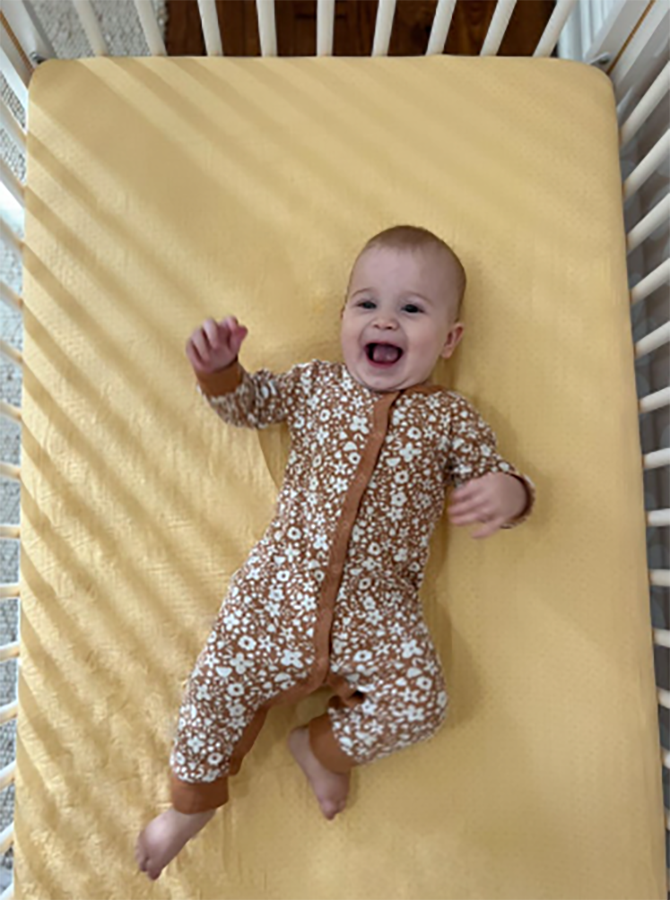
Eight-month-old babies are also more clued into their environments, taking notice of things around them. This can result in becoming overstimulated, making it harder to sleep.
Dropping a wake window
At about seven months old, your baby will be awake longer in the day so they can sleep better at night, meaning you’ll drop down to two naps rather than three. This can make your little one overtired and have a hard time falling or staying asleep.
8 month sleep regression: how to cope
If your little one is experiencing an 8 month sleep regression, you’re counting the days until it’s over. There are a few things you can do to make it easier for both of you.
1) Optimize your baby’s sleep environment.
The first thing you want to do if your baby is having sleep troubles is to make sure their nursery is optimized for sleep. Here are a few things to keep in mind:
Keep it dark.
An eight-month-old baby may nap a couple of times during the day, but the bulk of their sleep is happening at night. Whenever it’s time for shuteye, make sure the room is dark. Blackout shades can be a good idea to help them feel like it’s time to nod off.
Make sure it’s quiet.
Your bedtime might not be in sync with your baby’s, so you’ll have to be sure your household is quiet while they snooze, or else your little one will wonder what they’re missing out on. Try a white noise machine, as the constant noise will help lull them to sleep.
Cool it down.
If it’s too hot or too cold in the room, your little one will be uncomfortable and have a hard time going to sleep. Babies’ rooms should be about 68 to 72 degrees.
Dress your baby for the temperature.
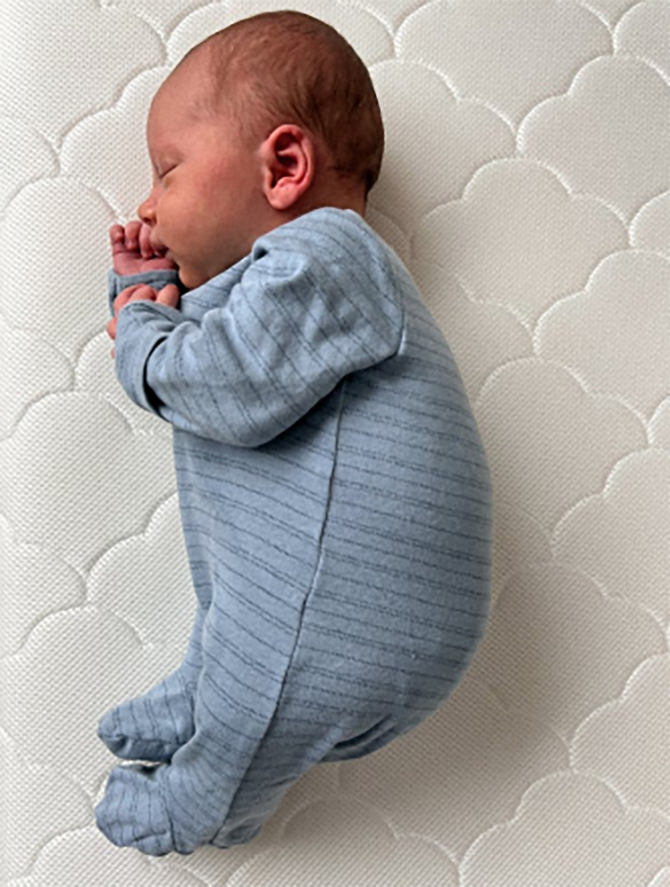
Be sure that they’re dressed in the right clothes for the room temperature. The rule of thumb is one layer more than you’d wear, so they’re warm but not hot.
2) Respond to their sleep cues.
Even though you made a sleep schedule, it’s baby’s own sleep cues that rule the day (and night). If you watch them closely, you’ll learn that they do things when they’re tired — rub their eyes, yawn, or even get extra fussy. When you see those cues, it’s time for bed.
3) Keep the sleep routine consistent.
Whatever your sleep routine is, even in times of sleep regression, you want to stick to it. That may mean bathing them, playing calming music, dimming the lights, and reading a bedtime story.
The predictable routine will help them understand that it’s time to sleep even if they have trouble doing it.
4) Practice safe sleep.
Of course, any time we talk about bedtime, we need to talk about safe sleep practices. It may be frustrating to go through a sleep regression, but you can’t lose sight of the most important things.
Only put your baby to bed in a crib, bassinet, or travel crib.
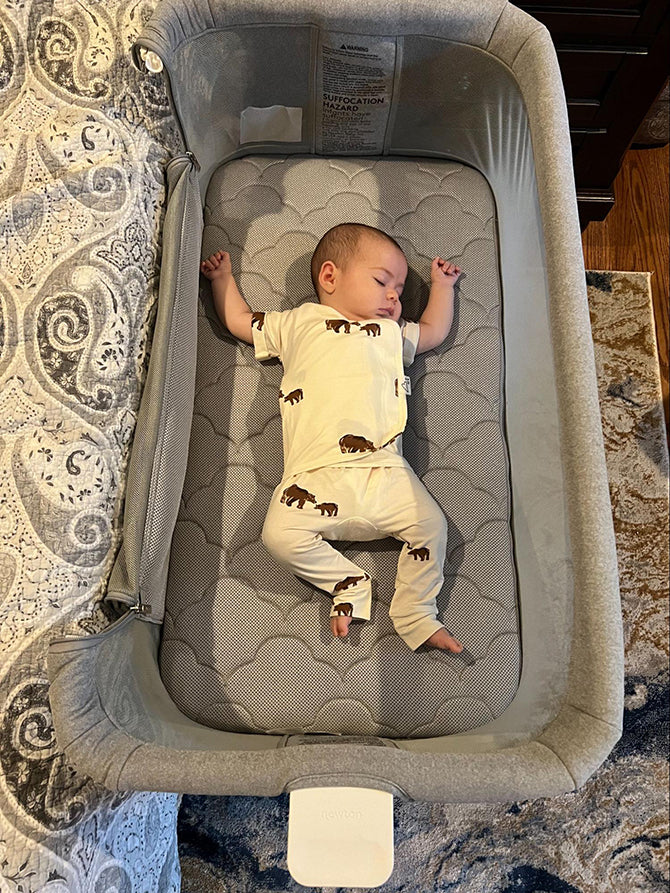
First, even if they finally fall asleep in a bouncer or on the couch next to you, you’ll want to transfer them to their sleep-safe crib, bassinet, or travel crib.
Make sure your baby’s mattress is firm and breathable.
Speaking of your baby’s crib, look inside and check their mattress. Safe sleep requires it to be firm, not cushy. You can tell that it’s firm enough if it immediately bounces back when you push down on it with your hand.
If it leaves an indentation, the mattress is too soft. You’ll also want to get a breathable mattress. These allow baby to thermoregulate and stay safe. If they flip on their stomach in the middle of the night, with a breathable mattress, baby can breathe right through it.
The Newton Baby Essential Crib Mattress is both firm and breathable, and, better yet, it’s also washable. That means if they have an accident or spit up in the middle of the night, it’s easy to clean every part of the mattress.
Never share a bed (but do share a room).
It may be tempting to take a quick nap next to baby in your own bed when they finally settle down, but sharing a bed is dangerous. You could inadvertently roll onto them, or they could get caught up with a cover, blanket, or pillow.
Instead, bond with baby by sleeping in the same room — them in a sleep-safe bassinet, crib, or travel crib, and you snuggled in your bed. Sharing a room is recommended for at least the first six months, but even better the first year. You’re in this thing together!
Put your baby to sleep on their back.
Even though at eight months old, they may be a pro at turning over, you always want to put them to sleep on their back up until their first birthday.
Keep blankets, stuffed animals, and pillows out of the crib.
Even once your baby is eight months old, you still want to live by the adage “bare is best” when it comes to the crib. Make sure it’s free of blankets, plush toys, and pillows as these can increase the risk of suffocation.
5) Try a pacifier.
Another way to coax sleep is to use a pacifier. According to experts, pacifiers used during sleep hours can even reduce the risk of SIDS.
6) Expose your baby to natural light during the day.
Another technique to help your little one get to bed more easily is to make sure they get outside during the day in the natural light. This helps reinforce the sleep-wake cycles triggering baby’s natural circadian rhythms.
When to call the doctor
If your baby’s still having problems sleeping after you’ve tried the above, or if their sleep issues are getting worse, talk to your pediatrician. They can give additional recommendations for teething, anxiety, or whatever else seems to be getting in the way of their sleep.
Back to sleep

Now that you’ve read what an 8 month sleep regression is, the signs, and what causes it, you can relax knowing that what you’re going through is completely normal. But normal doesn’t mean easy, so try one of the methods above to help baby get back to bed.
If you think your baby’s mattress is getting in the way of their restful sleep, it’s time for an upgrade. Newton Baby’s Essential Crib Mattress is not only firm but 100% breathable and washable — and that means 100% better sleep.
Leave it to Newton Baby to help your little one drift safely and comfortably off to dreamland.

